
Brand Authenticity with Dan Braker of Breakthrough Research
February 6, 2024
Big Investments and AI Legislation
February 14, 2024Climate change is a hot-button issue. Whether or not you believe it is real, it is something that many people are concerned about and are looking to address. With that in mind, we asked respondents in our recent round of research-on-research about their level of concern around climate change.
Overall, we found that 43% of respondents expressed high levels of concern, compared to just 22% who expressed low levels of concern.

Gender
Breaking down the data by gender, 42% of males and 44%of females expressed high levels of concern about climate change. On the flip side, 24% of males and 19% of females expressed low concern about climate change.
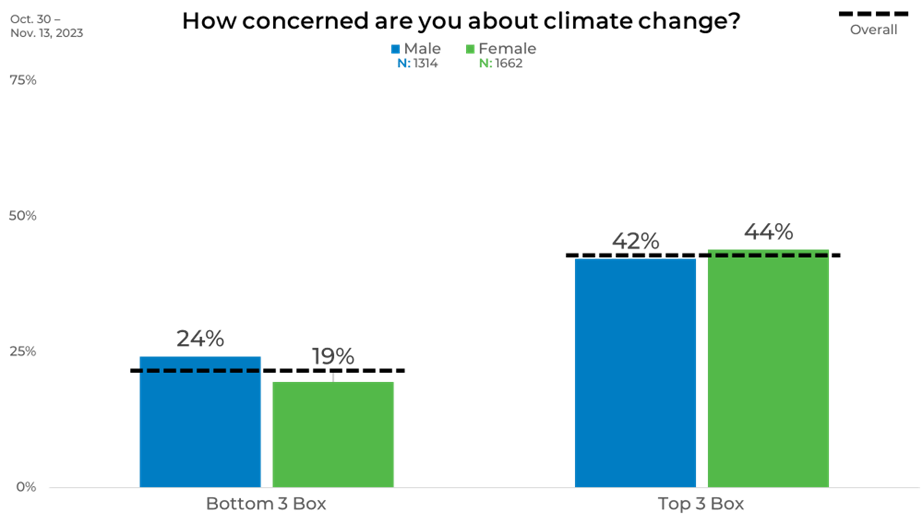
Age
We found some interesting trends when looking at the data by age. Analyzing climate change concerns across different age groups reveals insightful trends. Those aged 25-34 and 65+ are the age groups with the highest concern about climate change.
In terms of low levels of concern, we found that as age increased, so did the low level of concern about climate change.
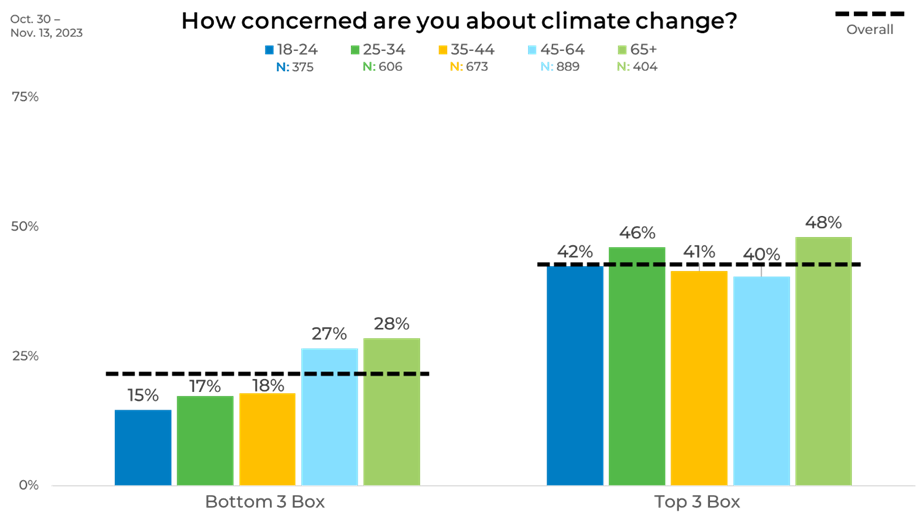
Political Affiliation
The data revealed some deep divisions based on political affiliation. Democrats are the most concerned about climate change, with a substantial 64% expressing high levels of concern, nearly 40 points higher than Republicans. Conversely, 38% of Republicans have a low level of concern about climate change, 31 points higher than Democrats.
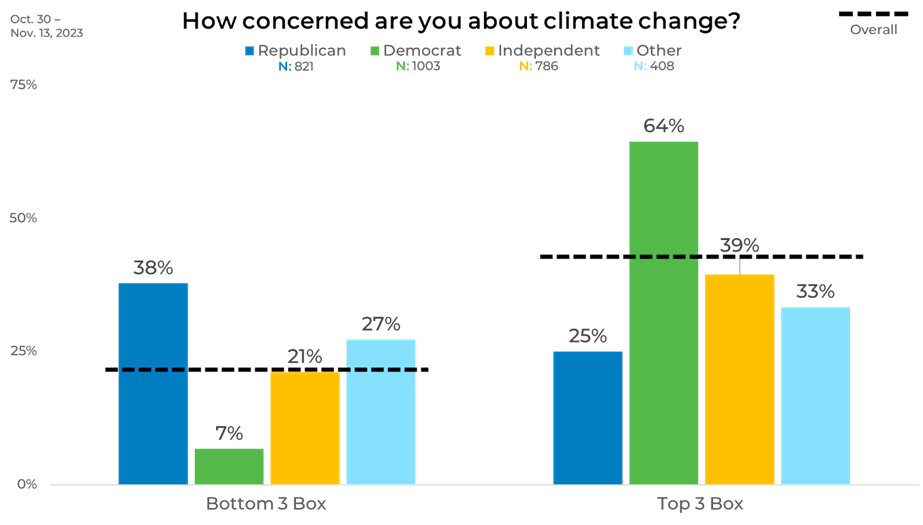
Region
The regional breakdown of climate change concerns in the United States revealed some patterns. The Northeast and West have the highest level of concern, with 47% of respondents indicating their worry. This could be due to these areas experiencing more of the impact of climate change in recent years.
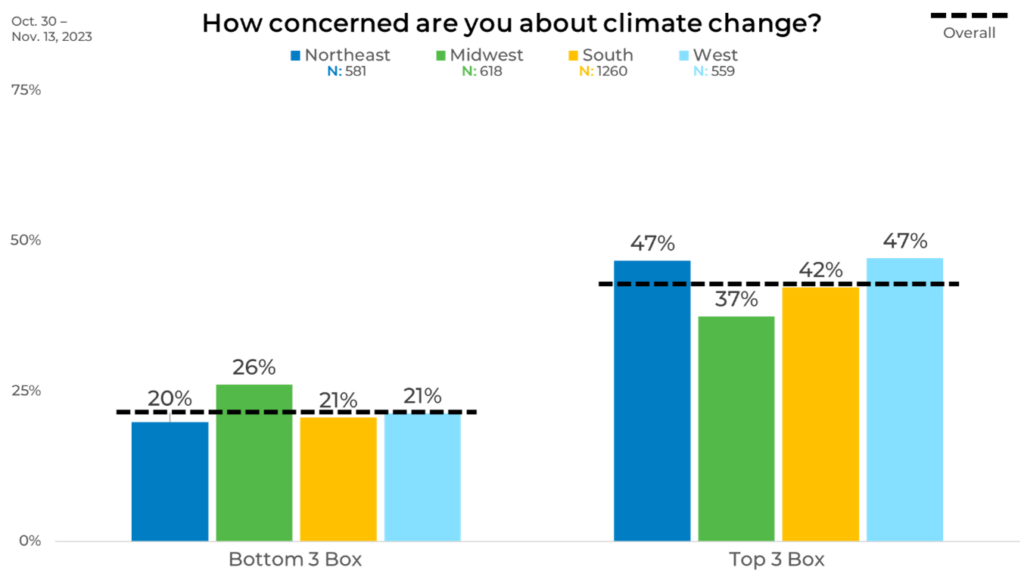
Panel
The data breakdown by panel highlights how panel selection could impact your results on divisive topics like climate change. There is a 17-point difference between Panels A and E around their high concern about climate change.
Of those with low concern about climate change, we see up to a 13-point difference across panels.
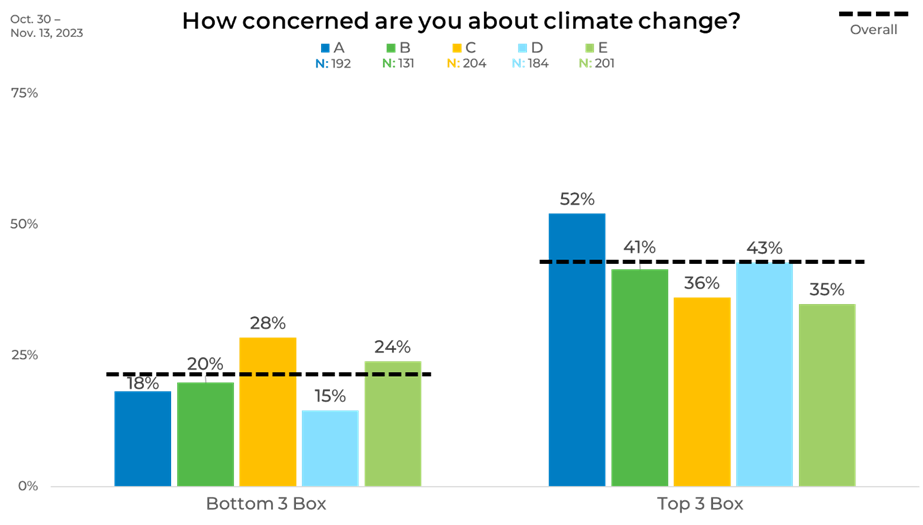
As you can see, results can vary significantly by panel, especially when asking about polarizing topics like climate change. These variations emphasize the necessity of strategic sample blending in research to avoid biases inherent in individual panels. Understanding how panels differ from one another is vital when you depend on a study to make critical business decisions.
Learn more about our Strategic Sample Blending approach by clicking the button below.




